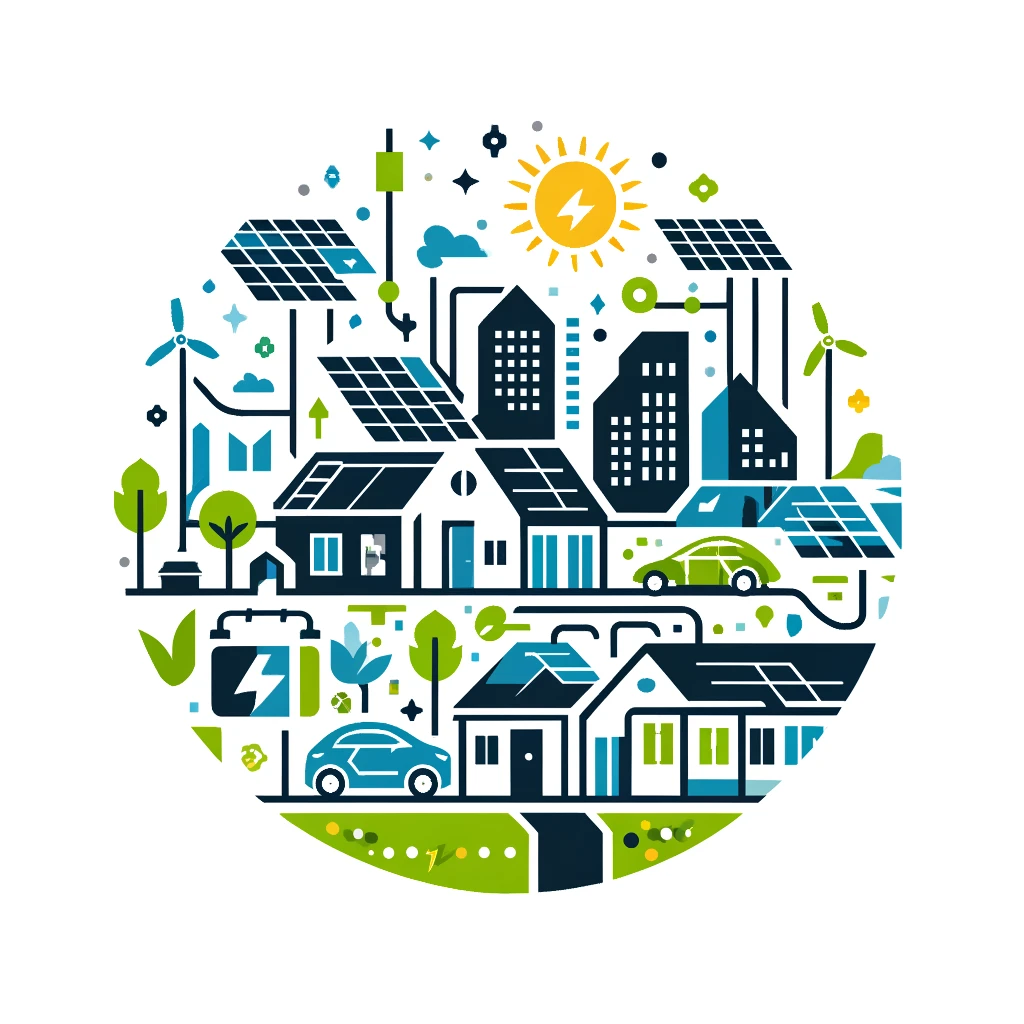Not just electricity is our vision. CEED-ECR will embed heating & mobility (transport) for making Energy Communities (ECs) more efficient. We will conceive solutions to support the integration of heating and transportation sectors into the green energy transition in Romania.
The energy ownership of citizens is not limited to electricity (lighting, cooling, electric heating). ECs are making their way into the thermal energy sector and the transportation sector as well. For the entire energy system to become more sustainable and efficient, actions are necessary in the areas of heating, cooling and transport just as much as they are in the case of electricity.
Romania, in particular, stands out as a geographically advantageous location for these initiatives: Energy Communities and RES-based projects.
Water heaters, electric stoves, air conditioning systems for both cooling and heating, humidity control systems, and chargers for batteries in electric gardening tools and Electric Vehicles (EVs) likely represent the largest energy consumers in residential settings. The energy produced by ECs and their RES-based systems is primarily intended for local use, guided by two principal directions:
- In Romania, heating systems are typically operational from the end of September to the end of May, covering an eight-month period necessary to ensure comfortable living conditions. In urban areas, many of the current centralized heating systems are outdated and prone to unscheduled outages despite ongoing maintenance. These systems, which often rely on gas and coal, contribute significantly to urban pollution, particularly during the colder months. Moreover, the cost of these fuels is increasing annually, taking up a considerable portion of household budgets. While individual gas heating systems in apartments are permitted in some cities, they too are costly and contribute to high pollution levels. In rural areas, the situation often involves burning wood and waste, including plastics and old materials like cloth, which not only heightens environmental pollution but also poses serious health risks due to the potential for monoxide poisoning.
- Transportation is another local consumer. Both public and private transportation, including transportation for large goods (such as furniture) can benefit from renewable energy. The vehicle fleet in Romania reached 10.3 million motor vehicles in 2023. Of these, 8.1 million are cars (only 43% new ones), according to the 2023 report of the General Directorate for Driving Licenses and Vehicle Registration in Romania. In 2023, Romania registered 16,852 electric vehicles, marking a 35% increase from 2022, according to a recent analysis by Lektri.co. Consequently, the total number of electric vehicles registered in Romania has reached 42,201 units that can locally consume from RES. The EU’s ambitious plan to achieve zero emissions encompasses a comprehensive strategy to reduce greenhouse gases across various sectors, with a significant focus on the transportation industry. A key element of this plan involves phasing out internal combustion engines that use fossil fuels and replacing them with cleaner alternatives. The EU has set clear targets for phasing out the sale of new petrol and diesel cars and vans by 2035. This move is part of a broader aim to reduce CO2 emissions from new cars by 55% by 2030, compared to 2021 levels, and from new vans by 50%. To replace thermal engines, the EU is heavily promoting the adoption of electric vehicles through various incentives such as tax reductions, grants, and subsidies for both consumers and manufacturers.
There is also significant investment in EV infrastructure, notably in charging stations, to enhance accessibility and convenience for EV users. Moreover, the EU is investing in research and development for advanced battery technologies and other alternative propulsion systems, including hydrogen fuel cells. Beyond personal vehicles, the EU is enhancing its focus on public transportation and shared mobility solutions. This includes upgrading public transport fleets to electric or hydrogen-powered vehicles and supporting the expansion of car-sharing schemes that use electric vehicles (e.g., Partago).
Through these initiatives, the EU aims not only to reduce emissions from the transportation sector but also to drive broader changes in mobility patterns and energy consumption, ultimately contributing to its climate neutrality goal by 2050. This transition is seen as an opportunity to foster economic growth, technological innovation, and improved public health across the continent.
Other directions for locally using RES can be added such as agrivoltaics or the usage of RES for agriculture (irrigation), small local or individual gardens.
